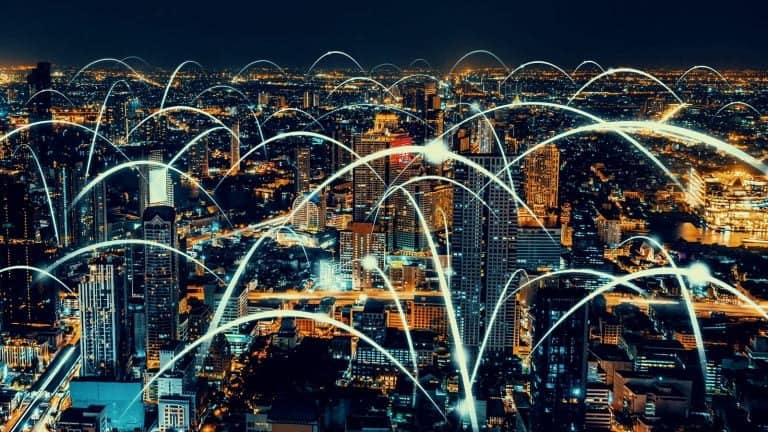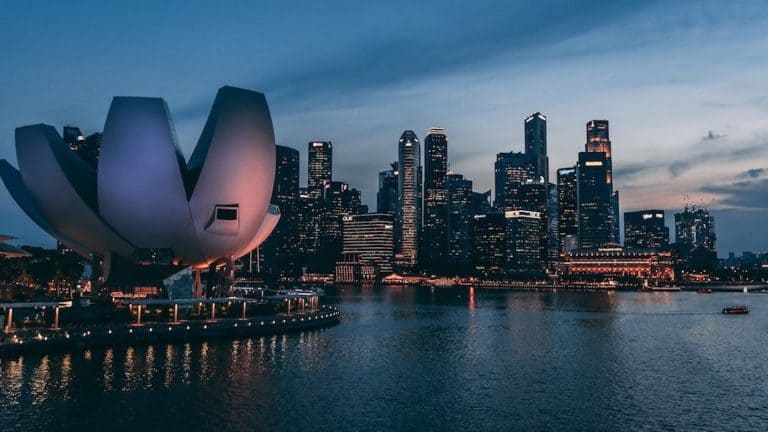Is creating smart cities the way to go in the aftermath of COVID-19? The COVID-19 pandemic shocked the world, and with good reason. What started as a rumor in a little-known market in Wuhan, China, in late 2019 quickly became the world’s most serious challenge of the 21st century. Within a few short months, thousands were dead globally. Industries came to a screeching halt. The cost to a damaged world economy is too massive to be quantified.
Table of Contents
ToggleDespite the tragedy, there are lessons to be learned. Key among these lessons is how pandemics spread in cities. These lessons are crucial to the success of future smart cities. The majority of the global population will live in urban areas by 2050. Urban planners must have the design and management know-how to prevent disease and effectively manage outbreaks when they occur.
Critical Lessons from the COVID-19 Pandemic
COVID-19 is extraordinary because it is transmitted through physical contact. This mode of transmission creates challenges for city residents in an increasingly connected world. When the virus enters an urban area, it spreads much faster than it does in smaller communities. It also tends to spread faster in poor urban communities where people live close to one another.
Experience from past pandemics tells us that cities that exterminate disease improve sanitation and improve public health withstand the impact of pandemics. Such lessons are the big test of the COVID-19 crisis. Have administrators properly articulated knowledge and policies? Can society effectively respond to similar circumstances in the future and manage diseases before they become epidemic? This is vitally important because COVID-19 isn’t the last pandemic. More pandemics are expected. In the last two decades, the world has experienced six significant threats. Before COVID-19, the world had dodged five bullets SARS, MERS, Ebola, avian influenza, and swine flu.
How Urban Life Will Change
There are numerous examples of the impact the pandemic had on the lives of ordinary people. Many of the little things, from haircuts to restaurants that we take for granted, are changing.
Experts paint a picture of a change in daily routines. People will spend more time working from home. Most ordering will be online, and the retail industry will have to downsize staff to cope with the new normal. According to Coresight, 25,000 US stores will shut down. Over half of these stores are within American malls. People will continue to practice social distancing even though the city center will remain the center of entertainment, arts, and culture. City residents are more conscious of their personal space and the importance of practicing good personal hygiene, such as always having a handkerchief and a personal bottle of hand sanitizer. These will become new cultural norms, and anyone deviating will be frowned upon by society.
The market for office space will also fall dramatically over the next few years as more people work from home. The pandemic has demonstrated that large office spaces are not necessary for productivity.
The operation of cities is under reconstitution, with the main objective being to improve health, sanitation, social services and generally improve the quality of life.
So is this the End of Cities?
Looking at the pandemic’s devastation, one is tempted to conclude that cities are a bad idea. Shouldn’t we all move back to the countryside and suburban areas to avoid overcrowding? Unfortunately, this is utopian thinking. It is impractical and virtually impossible to eliminate the city as a cultural, economic, and financial hub. The solution lies in creating smart cities. But, how will smart cities help prevent epidemics and mitigate the effect of pandemics? The answer lies in technology.
Below are examples of smart city solutions that can help improve public health and sanitation.
- Touch-free check-in processes: These include apps and systems that people can use to check in to an event and then navigate the least crowded routes to the venue. They can also be used to open elevators, doors and access other areas without pressing buttons and risk contact with germs.
- Air quality monitors: In smart cities, air quality monitors in buildings will continuously monitor for pollutants, toxins, and pathogens. Residents are notified instantly if the danger levels exceed benchmarks established by public health regulators.
- Safe distance robots: Singapore has won the IMD Smart City Index for two years in a row, and with good reason. The city has pioneered the implementation of bleeding-edge smart city solutions. One of the recent examples is a robot dog that senses the distance between human beings in its path. Sensors detect when people are too close together. The robot then plays a recording reminding people to stay at least one meter apart.
(Image source: YouTube)
- Disinfectant spraying drones: When COVID-19 first broke in China, the government experimented with quickly and efficiently disinfecting public areas. One of the methods that proved hugely successful was the use of drones. In the future, autonomous drones will periodically disinfect public areas and vehicles to reduce pathogen transmission mechanisms.
- Remote temperature monitoring systems: In future smart cities, AI-based remote temperature sensing systems will be able to pick out a sick individual on the street and automatically notify the individual to immediately visit a health facility or send a community health worker to them.
- Overcrowding heatmaps: This technology is already in the works in Singapore through an interactive webpage developed by National Parks, a Singapore Government agency. The site allows residents to view the Visitorship Status of various parks, recreational areas, and open spaces around the city. This way, residents can avoid areas with a high number of people.
- Smart traffic control and information systems: In most cities, traffic is the main cause of congestion and overcrowding. Smart traffic control systems, smart parking, and the creation of bicycle lanes reduce traffic congestion.
- Free 5G Internet: The growth of 5G Internet will deliver fast Internet to most people. Making the Internet a free and fundamental human right is the final prerequisite needed to move most people to a work-from-home model. Working from home reduces overcrowding, contact and interrupts a pathogen’s infection chain.
The Cost of Building a Smart City
Creating smart cities post-pandemic is critical. Cities around the world have a myriad of problems that smart solutions can solve. Unfortunately, there is a shortage of forward-thinking officials, and cities tend to be strapped for cash. This is the reason many smart city initiatives are public-private partnerships. So, what is the cost of building a smart city?
In deciding on the kinds of investment needed, decision-makers should approach the issue from three dimensions: the situation, the solution, and sovereignty.
Creating Smart Cities – The Situation
One size certainly does fit all in as far as creating smart cities go. Cities are unique and at different stages of development. In a joint report by Bloomberg New Energy Finance and McKinsey & Company on the Future of Mobility, the authors demonstrate the stark differences in cities.
The following combinations of density, wealth, and level of development determine the city’s current situation and should guide policy.
- Dense, developing cities: Examples of such cities include Mumbai, New Delhi, and Mexico City. They are characterized by heavy traffic, inadequate and dilapidated infrastructure, and heavy air pollution.
- High-income, low-density cities: Sydney and Houston are good examples of sprawling low-density cities in high-income developed economies.
- Dense developed cities: Finally, we have scenarios like Paris and Seoul, which are highly dense populated cities.
Based on the situations above, it is clear that what may be a smart life-changing tool in Mexico City may not be appropriate for Sydney. Decision-makers must understand their unique situations and come up with appropriate solutions.
Creating Smart Cities – The Solution
Solutions also depend on the circumstances. In all things, there is a state-of-the-art option and a low-budget solution. Certain things also need prioritization over others. For example, is it better to implement free Wi-Fi or install an advanced stormwater drainage system? It all depends on the city’s priorities. When making the trade-off, decision-makers must ask themselves two questions, what is the cost, and why do city residents need this solution?
Sovereignty
The third often-overlooked dimension has to do with who makes the decisions and how the decisions are made. Are key decisions made by public officials, or is decision-making shared with private partners? Is public participation mandatory or optional?
Some technologies start and have a life of their own, spreading without any regulatory approval. Uber and Airbnb are two such examples. No one can argue that they are not transport and accommodation infrastructure, respectively.
Other technologies require government approval, control, investment, and regulation—for example, smart traffic control systems, remote temperature monitoring systems, and disinfectant spraying drones. There are serious challenges for a private entity conceiving and running such projects on its own.
Paying for the Smart City
When a decision is made, plans drawn up, costs calculated, and the value generated by creating smart cities understood, various funding and financing mechanisms can be explored.
It is essential to make the distinction between funding and financing. In funding, the government (Federal or State) provides a specific amount of money in a particular purpose. The government dictates the use of this money. The funds are interest-free with no payment expectation. In financing, a financier provides an amount of money to fund the project. The funds are repayable with interest.
Public-private partnerships combine elements of funding and finance. The government typically agrees to provide the approvals needed, allocates infrastructure, and provides some funding, while the private sector offers a greater chunk of funding and runs the project.
With that understood, there are two main funding and financing models:
Public funding
There are several public funding models. The most common are as follows:
- Exchequer financing: Using taxpayer funds from the exchequer to fund a project.
- Debt financing: The government floats a bond to pay for the creation of smart cities.
- Grants: An international or regional body such as the European Union provides a grant to implement smart city initiatives.
Private finance
Examples of private financing models include:
- Traditional loans and leases: Payment for the project is made over some time. The public sector may repay the loan, or third-party/user fees can go towards loan settlement.
- Vendor finance: An equipment vendor such as an engineering contractor may be willing to provide finance for a project. The funds lent are specifically used to buy equipment from the vendor.
- Revenue share financing: The project receives financing returns for a share of revenues it will collect from project users.
- Equity financing: The project takes on a strategic private equity partner.
Creating Smart Cities | Cost Examples
In closing, it is helpful to examine how much forward-thinking minds are setting aside to pay for smart cities. It is estimated that cities around the world will invest over $41 trillion in smart city initiatives over the next 20 years. Tech companies are in the thick of things with Sidewalk Labs, an Alphabet Company, investing $50 million into a smart city neighborhood in Toronto, and Bill Gates is investing $80 million into Belmont in Arizona.





